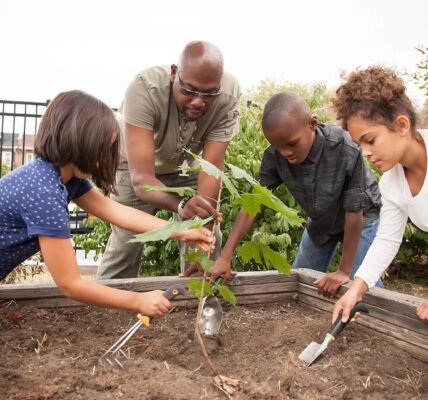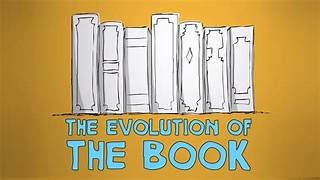
Project-Based Learning (PBL) is an instructional methodology that encourages students to learn by engaging in projects that require critical thinking, collaboration, and real-world applications. Unlike traditional teaching methods, which often involve rote memorization and passive learning, PBL focuses on student-centered experiences. In this approach, learners actively seek out knowledge through inquiry and exploration. Project-Based Learning Benefits
PBL immerses students in complex, real-world problems that challenge them to think critically and solve issues creatively. This format allows students to work on projects over an extended period, leading to a deep understanding of the subject matter. As a result, they develop essential skills such as problem-solving, critical thinking, and collaboration while enhancing their communication abilities. These competencies are crucial in today’s fast-paced world, where adaptability and innovative thinking are vital.
The relevance of project-based learning in modern education stems from its alignment with the needs of the 21st-century workforce. As industries evolve, employers increasingly value skills that PBL nurtures. Consequently, educational institutions are integrating this method into their curricula to prepare students for future challenges. By implementing PBL, educators create engaging learning environments that address academic content and foster essential life skills. Thus, project-based learning is becoming a vital component in the evolution of educational practices, paving the way for effective and meaningful learning experiences.
Key Features of Project-Based Learning
Project-Based Learning (PBL) is distinguished by several key features that create a dynamic educational experience. One of its most notable characteristics is the student-centered approach. In PBL, learners take an active role in their education, exploring topics that genuinely interest them while driving the inquiry process. This autonomy fosters engagement and encourages critical thinking, cultivating a sense of ownership over the learning journey.
PBL is also characterized by real-world relevance. Assignments connect academic concepts to practical applications, ensuring that students understand the significance of their work. For instance, a research project on renewable energy can empower students to explore local sustainability initiatives, illustrating how theoretical knowledge translates into tangible benefits for their communities.
Another critical attribute of PBL is the emphasis on learning by doing. This experiential component allows students to apply their skills in a hands-on environment, reinforcing knowledge through practice. Activities such as designing prototypes or conducting experiments enable learners to engage deeply with the subject matter, enhancing retention and understanding. This active participation also encourages collaboration among peers, fostering teamwork and communication skills essential for success beyond the classroom.
Lastly, PBL is inherently interdisciplinary. It encourages connections across various subjects. By integrating mathematics, science, art, and social studies into a single project, students can see the multifaceted nature of real-world problem-solving. For example, a project that involves planning a community garden can incorporate lessons in biology, environmental science, and budgeting. Through these features, project-based learning cultivates a rich educational environment, preparing students to navigate complex challenges in the future.
Enhanced Engagement and Motivation
Project-Based Learning (PBL) transforms education, particularly in enhancing student engagement and motivation. One significant aspect of PBL is the autonomy it provides. When students choose their projects—selecting topics and determining investigation methods—they develop a sense of ownership over their learning. This autonomy fosters a deeper connection to the material and encourages students to take initiative, leading to higher levels of enthusiasm and commitment.
Meaningful projects serve as a catalyst for increased student investment. When learners explore real-world issues that resonate with their interests, they exhibit heightened motivation. This connection to relevant content makes learning enjoyable and cultivates curiosity. Engaging students in hands-on experiences allows them to see the practical application of what they learn, making their educational journey more relatable and impactful.
The positive shift in students’ attitudes towards learning can be attributed to the collaborative nature of PBL. Working in teams allows students to communicate, negotiate, and share ideas, enhancing their social skills and promoting a sense of community. As they collaborate on projects, they develop critical thinking abilities and gain confidence in their contributions. This supportive environment encourages students to express their thoughts and take risks in their learning process.
Ultimately, the combination of autonomy, meaningful engagement, and collaboration in Project-Based Learning contributes to a more motivated and dynamic learning experience for students. By fostering an environment that encourages exploration and teamwork, PBL prepares students for academic success and lifelong learning.
Development of Essential Skills
Project-based learning (PBL) emphasizes active exploration and real-world problem-solving. This methodology enriches students’ knowledge while fostering essential skills crucial for personal and professional success. One of the most significant benefits of PBL is the enhancement of critical thinking. Engaging with complex projects compels students to evaluate information critically, analyze perspectives, and synthesize creative solutions. Project-Based Learning Benefits
Effective communication is another vital skill developed through PBL. Collaborative projects require students to articulate ideas clearly and listen actively to peers. This dynamic exchange encourages public speaking, writing, and digital communication, ensuring students are prepared for future interactions.
Teamwork is a cornerstone of the PBL approach. Students often work in groups, necessitating collaboration, negotiation, and conflict resolution. These group dynamics cultivate responsibility and help students value others’ contributions. Educators note that these experiences enhance interpersonal skills and appreciation for collaboration.
Furthermore, creativity is nurtured as students explore innovative solutions. Engaging in projects that require original ideas teaches them to embrace creativity as an essential part of learning. Lastly, project-based learning equips students with adaptability skills. As projects evolve and challenges arise, learners adjust their strategies, fostering resilience and flexibility. Project-Based Learning Benefits
Real-life testimonials from educators demonstrate PBL’s transformative power. One educator remarked, “My students have become more engaged and ready to tackle challenges. They are developing problem-solving skills they will carry into their futures.” This paradigm fosters competence and empowers students to thrive in an ever-changing world.
Real-World Application of Knowledge
Project-Based Learning (PBL) enhances student engagement with academic concepts by facilitating real-world applications. In traditional settings, students often encounter theoretical knowledge that feels abstract and disconnected from everyday life. However, PBL allows learners to apply their skills to authentic problems mirroring real-life challenges. This approach fosters deeper understanding and enhances motivation as students see the immediate relevance of their studies.
Projects designed within the PBL framework encourage students to tackle complex issues, developing critical thinking and problem-solving abilities. For instance, a project might require students to devise solutions for local environmental concerns, bridging scientific theories and environmental stewardship. This hands-on experience reinforces the concept that education involves applying knowledge to make informed decisions and positively contribute to society.
Moreover, the connection between academic concepts and practical application encourages collaboration, communication, and creativity—skills crucial for success in the modern workforce. Engaging in team-based projects helps students navigate group dynamics and cultivate interpersonal skills, mirroring real-world workplace settings. Project-Based Learning Benefits
Integrating community involvement in PBL projects enhances students’ ability to relate their learning to society. By engaging with local organizations or addressing community needs, students gain valuable insights and foster a sense of responsibility. This holistic approach ensures students graduate with both knowledge and practical skills to navigate complexities in their personal and professional lives. Overall, the real-world application of knowledge in PBL is vital for equipping students for future challenges.
Fostering Collaboration and Communication
Project-based learning (PBL) promotes collaboration and communication among students, making these key components of the learning process. As students engage in group projects, they collectively navigate challenges, brainstorm solutions, and build upon each other’s ideas. This collaborative engagement fosters a sense of belonging and community, essential for developing effective interpersonal skills.
One primary benefit of PBL is that it encourages teamwork. Through shared responsibilities, students learn to delegate tasks based on individual strengths, working together towards a common goal. This dynamic minimizes individual workload and enhances learning outcomes, as students can draw on their peers’ diverse perspectives. Collaborative efforts often lead to innovative ideas, as diverse viewpoints contribute to creative problem-solving.
Moreover, peer feedback plays a crucial role in student development within a project-based framework. Regular engagement in constructive criticism helps students refine their communication skills and articulate their thoughts clearly. This exchange fosters a culture of continuous improvement. Implementing structured feedback loops can enhance this process, ensuring students are receptive to feedback and confident in providing it to others.
To maximize collaboration within projects, educators can employ specific strategies such as assigning roles, setting clear expectations, and utilizing collaborative tools like shared digital platforms. These approaches streamline group efforts and nurture essential skills such as negotiation and compromise. Overall, the collaborative nature of project-based learning enhances students’ ability to communicate effectively, paving the way for academic success and future professional endeavors. Project-Based Learning Benefits
Challenges and Solutions in Implementing PBL
Project-Based Learning (PBL) offers numerous opportunities for engaging students in meaningful educational experiences, yet it presents challenges. Educators often face hurdles when integrating this instructional strategy into their curriculum. One common issue is the lack of resources, including material supplies and access to technology. Teachers may struggle to source appropriate materials, especially in underfunded environments.
Another prevalent challenge is time constraints. Planning, executing, and evaluating projects require substantial time, which conflicts with standardized curricula prioritizing specific content. This scheduling conflict can make educators apprehensive about fully committing to PBL, fearing they might fall behind on mandatory topics. Project-Based Learning Benefits
Additionally, student resistance can hinder effective PBL implementation. Some students may initially struggle with the open-ended nature of projects, finding it hard to adapt from traditional rote learning to a more collaborative, self-directed approach. This resistance may manifest as disengagement or frustration, making it essential for educators to cultivate a supportive learning environment.
To tackle these challenges, educators can employ several practical strategies. For resource limitations, partnerships with local businesses, community organizations, or online resources can help supplement materials needed for projects. To address time constraints, careful planning and prioritizing project objectives can ensure that essential content is covered while allowing for teaching flexibility.



